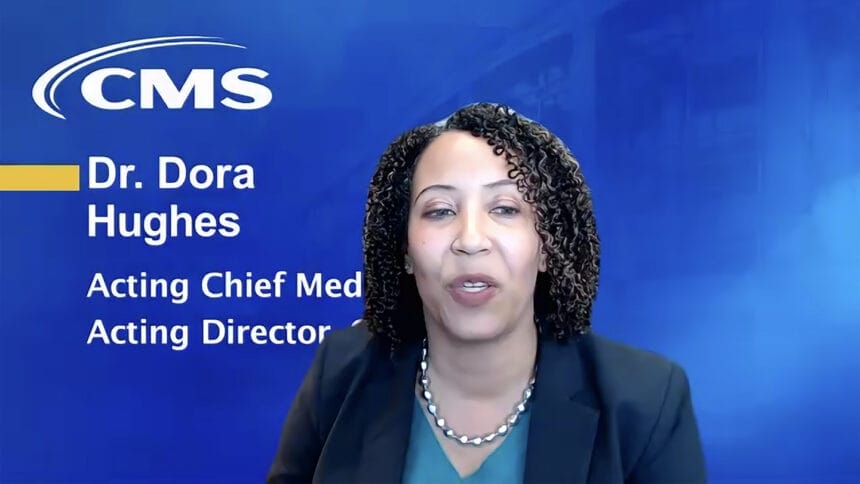
The Centers for Medicare & Medicaid Services plans to finalize its minimum staffing rule for nursing homes during 2024, an official confirmed Tuesday during a national stakeholder call.
“The team received more than 46,000 comments on the proposal, which are being used to inform development of the final rule, which we intend to finalize this year,” said Dora Hughes, MD, acting CMS chief medical officer and acting director of the Center for Clinical Standards and Quality, which developed the rule.
Some provider groups had expected CMS to take at least a year to review and react to the thousands of comments it received ahead of the Nov. 6, 2023, deadline. Some had projected much longer, due to the volume of feedback and level of controversy. CMS itself, in a behind-the-scenes planning document known as the Unified Agenda, had said it could take up to the full three years allowed by the rules that govern rule-making.
The rule was proposed last September and roundly criticized by providers, who say the timing couldn’t be worse, given historic labor shortages. As initially proposed, the rule requires 0.55 hours of direct care per patient day by a registered nurse and 2.45 hours by a nurse aide. It also increases facility assessment requirements and calls for 24/7 RN coverage starting two years after the rule’s finalization.
Provider organizations have pledged to defeat the rule, while separate bills in the House and Senate would block it from taking effect until the workforce crisis eases.
The American Health Care Association/National Center for Assisted Living on Tuesday afternoon questioned the wisdom of a speedy adoption.
“It is unfortunate that CMS plans to move forward with this rule despite the vast amount of concerns from a variety of stakeholders,” AHCA said in an email to McKnight’s Long-Term Care News. “This unfunded staffing mandate will have a compounding and detrimental effect on seniors’ access to long term care.”
Nothing else was said about the rule during the stakeholder call, which included a full slate of CMS officials briefly highlighting 2023 accomplishments and laying out focus areas for 2024.
Among other skilled nursing highlights:
- Hughes noted the survey and certification team at CCSQ worked on roughly 10,000 healthcare and long-term care enforcement actions nationwide, despite concerns about federal staffing levels and a partial hiring freeze implemented last summer. The agency said last month that it was set to begin testing a pared-back survey process for nursing homes that could help address ongoing backlogs.
- Hughes also touted “great COVID vaccination stats” achieved through Quality Improvement Organizations working directly with nursing homes. She said 2023 efforts included at least 1,200 clinics, during which more than 21,000 residents and 6,000 staff were vaccinated. Since December, providers have been calling for greater federal support for facility vaccination initiatives. As of Jan. 7, just over 38% of nursing home residents were up to date on their COVID shots. As of Dec. 31, that rate was at just 8% among nursing home staff.
- Officials also underscored the importance of a Medicare Advantage rule finalized last week that aims to ease the administrative and patient burdens that come with plans’ past pre-authorization requirements. “It is critical that prior authorization not be an impetus [that is] keeping people from getting care but is an improvement to their care,” said CMS Administrator Chiquita Brooks LaSure. “These changes are reflective of your feedback to us, about the pressing issues that happen in the lives of providers and Americans, and we are listening.”
“We have an ambitious agenda for 2024,” Brooks-LaSure added.” All of our work is focused on working to ensure that all of the people covered under our programs have a just opportunity to obtain their optimal health, no matter what they look like, where they live or how much money they have. Health equity will always be a cornerstone for our programs and initiatives by focusing on getting everyone eligible and into coverage and ensuring that when they get into that coverage, it is meaningful.”




